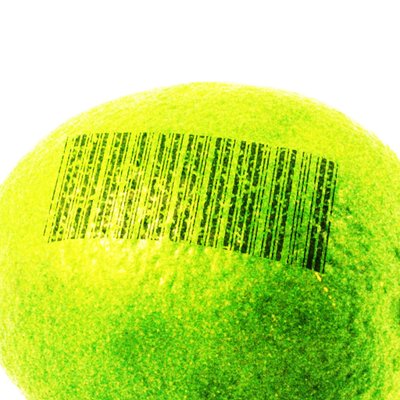This year I had the pleasure of working on a big art project for Burning Man with a wonderfully talented group of artists and engineers in my community. It started with a simple idea: Let’s bring a variable reach forklift to Burning Man, and put a cloud on it. The project’s tongue-in-cheek Kickstarter video illustrates the concept we were going for:
(View on YouTube)
In only about two months, we worked hard and this vision took shape. The skin of the cloud was made from thousands of squares of HDPE plastic zip-tied together. I love projects that import a simple and rigid digital aesthetic into the imprecise real world, where the constraints of manufacturing and assembly leave their own unique marks on the result. This was especially true at Burning Man, where we assembled our art in the desert heat, contorting our bodies to reach inaccessible internal bolts, soldering upside-down, and dealing with unexpected equipment failures.
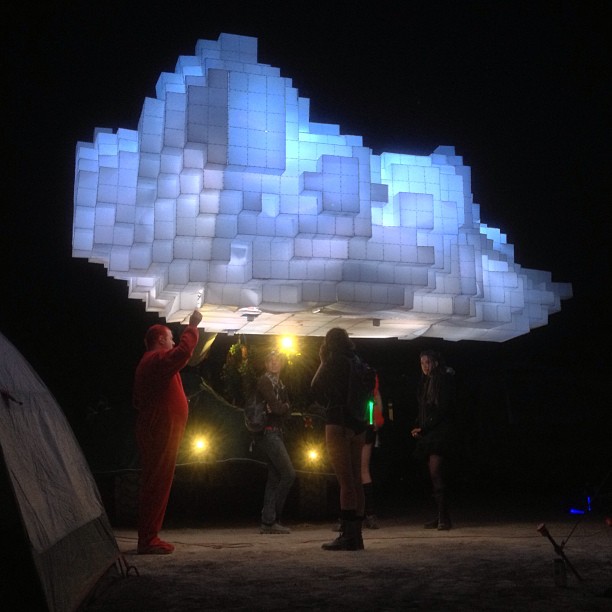 (Photo: Making final adjustments on the Ardent Mobile Cloud Platform, by Aaron Muszalski)
(Photo: Making final adjustments on the Ardent Mobile Cloud Platform, by Aaron Muszalski)
I’m used to projects that involve some level of technical complexity that leaves me feeling like I just accomplished something challenging. This feeling eventually subsides, and leaves me wondering why it was I that actually built the thing at all. This project did still involve some technical challenge, but it was about so much more than that. Art projects like this bring my community together, and we all enjoy using the art to create weird and delightful experiences for those around us. For me the peak of this experience was Tuesday night False Profit party, riding the cloud 40 feet in the air with my friends and collaborators, taking in the spectacle of Burning Man around us, people far below us dancing around an art project I helped create.
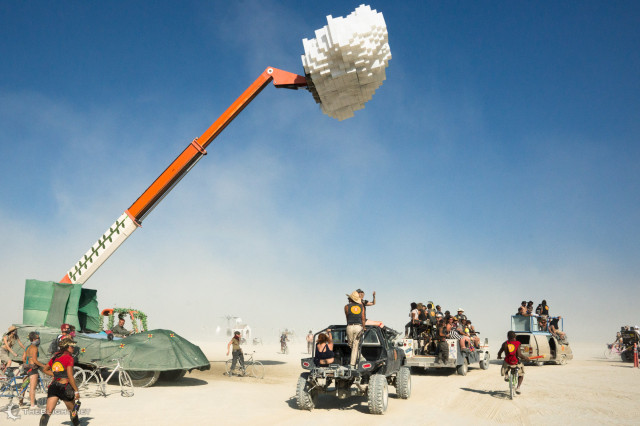 (Photo: The Ardent Mobile Cloud Platform rains on the DPW Parade, by Neil Girling)
(Photo: The Ardent Mobile Cloud Platform rains on the DPW Parade, by Neil Girling)
As is the tradition of Ardent Heavy Industries, we took a dumb idea way too far. This wasn’t just a static sculpture, it sported an interactive control panel via WiFi and an iPad running TouchOSC. This cloud was equipped with a water pump and pressure vessel, two computer controlled valves, a sound system, and 2368 individually addressable RGB LEDs.
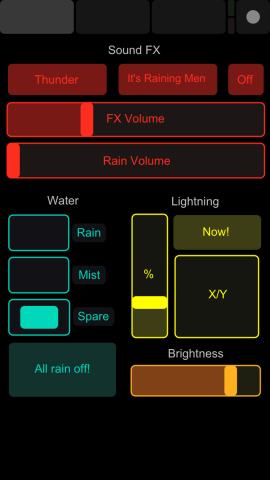
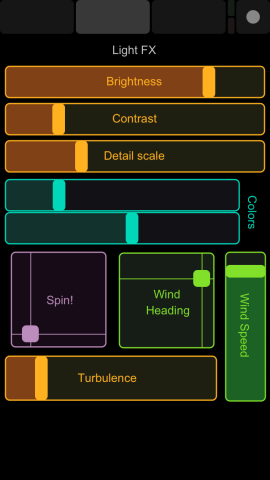
I was in charge of the electronics and software for the project, and I designed the volumetric lighting. The effect is a little like mapping a 3D light texture onto the outside of our cloud. I built modules with addressable WS2812 LED strips aimed outward at the translucent cloud skin. These were controlled by a Raspberry Pi and five of my own Fadecandy LED controller boards. The Fadecandy boards used high-speed temporal dithering and gamma correction to very smoothly interpolate between keyframes generated by the Raspberry Pi. The Pi’s software has a rough idea of where each LED is in 3D space, and it uses that location to sample from a 4D fractional Brownian motion function.
The result was really beautiful at night:
Working on AMCP has been a great experience, and I’m looking forward to doing more projects that create weird experiences and bring people together.
